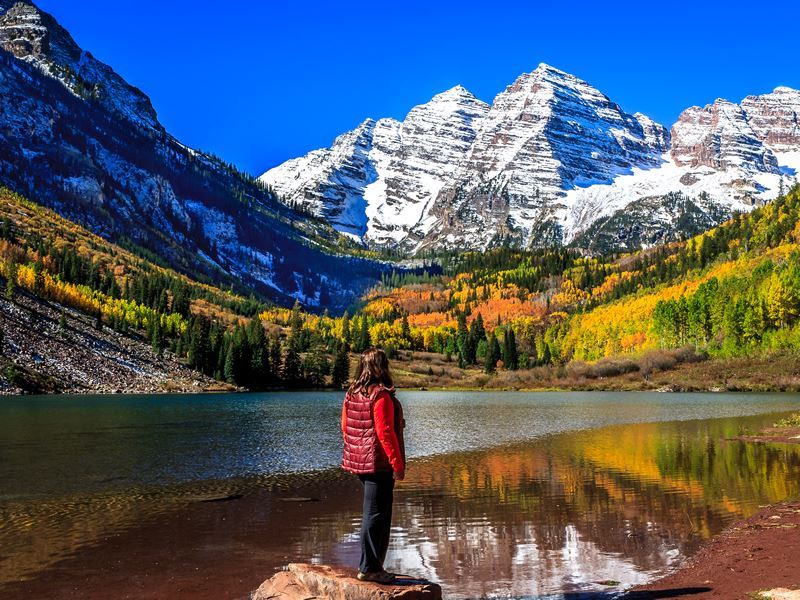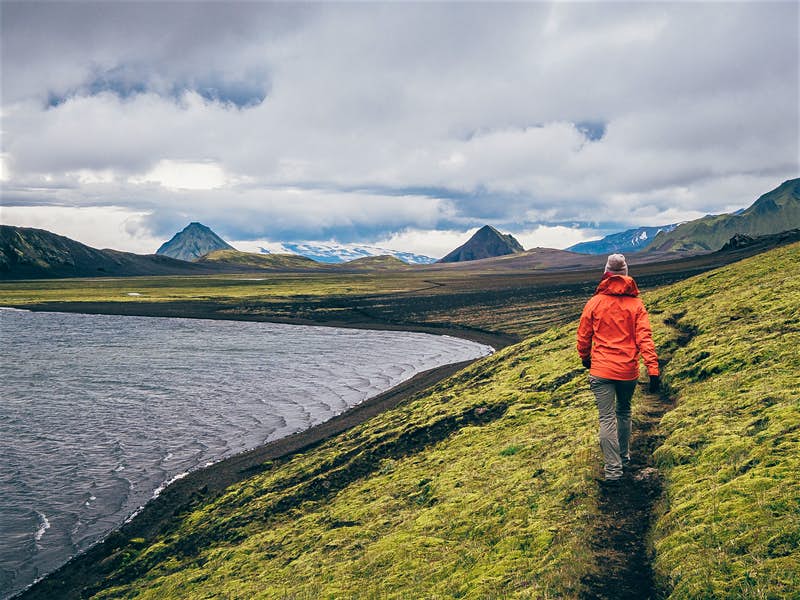The best hiking trails in Lanzarote

Due to its privileged climate, beautiful landscapes and unaltered and wild nature, the island of Lanzarote is an ideal destination for trekking and hiking enthusiasts.
Whether you are an expert in trekking or an inexperienced beginner who wants to get started in this exciting sport, in Lanzarote you will find routes adapted to your level.
In Lanzarote Experience Tours we have created a list with some of the best hiking routes in Lanzarote, almost all signposted, adapted and approved for hiking, so that your trip to the Isle of Fire becomes a real adventure.
The best hiking trails in Lanzarote
The Ajaches
One of the most outstanding hiking routes in Lanzarote is Los Ajaches, a large volcanic formation located in Yaiza, in the southeast of the island. Along its plains you can feel the volcanic energy that shaped this area, the oldest in Lanzarote, more than ten million years ago.
The Los Ajaches hiking route is of high difficulty: it consists of six kilometres of arid and stony land with notable unevenness, which can be done in about five and a half hours. However, its realization is quite an experience, not only because of the beauty of its stretches, but because to travel this route is also to travel the history of Lanzarote.
For its journey, it is essential to bring enough food and drink, as well as trekking shoes, sun protection and bathing suit (the route passes through several beaches).
One of the most interesting aspects that characterize this hiking route is that it is an area of archaeological sites where ancient fossils and caves have been found that in the past sheltered the Majos, the aborigines of Lanzarote.
The route begins in the village of Femés, located in the valley of the same name. Along the route, we can appreciate the famous arid landscape of Lanzarote in all its splendor. In Degollada pico roondo and Degollada del portugués, we will be able to observe old agricultural constructions in stone, nowadays abandoned.
Further on, in the Torreta area, we will be able to see archaeological remains attributed to the aborigines, specifically piles of stones. The route passes in its final stretch by the Papagayo Beaches, where we can rest and enjoy a good bath.
In the final stretch, in the Rubicon, we can see the remains of the wells that the Normans built during the conquest of the Canary Islands. We can also see the Castillo de las coloradas, built in the 18th century to protect the island from pirate attacks.
As a colophon, and almost as a reward, the route ends at Playa Blanca, where you can enjoy a well-deserved rest on one of the best beaches on the island.
Way of the Gracioseros
La Graciosa, considered the eighth island of the Canary Islands, is a small island located northwest of Lanzarote. El Camino de los Gracioseros is a hiking route that recreates the route that the ancient inhabitants of La Graciosa used to take to get to and from their sister island, Lanzarote. Undoubtedly, a great idea for hiking in Lanzarote.

This route is of medium-high difficulty due to certain difficulties in its terrain and its extension of 9 kilometers. In it, will depart from the village of Yé to travel the Risco de Famara along the coast to reach the area of the River, the small stretch of sea that connects Lanzarote with La Graciosa. Along the route, we will be able to appreciate marvellous views to the coast of the island, with La Graciosa on the horizon.
As with the route of Los Ajaches, in the Camino de los Gracioseros we can see ancient stone formations attributed to the aborigines of the island. As point and end to this route of round trip of three hours, we can rest in the beautiful virgin beach of Bajo el Risco.
Haría – The Grove
From the impressive Valley of the Thousand Palm Trees, in Haría, starts this medium difficulty, unmarked, seven-kilometre-long hiking route. The end of the trail will take us to El Bosquecillo, an area with trees and shrubs that has incredible views of the Risco de Famara.
The route begins in a path oriented northwest towards the Valley of Malpaso, where we will have the first visual gift of this route in the form of exuberant valley. Further on, passing through El Bosquecillo, we can take advantage of the tables and benches in this area to take a break and eat, while enjoying wonderful views of the Chinijo Archipelago and the entire northwest coast of Lanzarote.
The end of this walk, one of the best within the offer of hiking in Lanzarote, takes place in the Caleta de Famara, one of the best beaches on the island and an unbeatable end to this route.
White Boiler
The Canary Islands are rich in calderas, geological formations caused by the eruption of a volcano. The Caldera Blanca hiking route runs through one of them, located in the centre of the island of Lanzarote. The volcanic eruption that gave rise to Caldera Blanca dates back to 1730, just 300 years ago.
This trekking route is of low difficulty and is suitable to be enjoyed by people with different levels of hiking, despite its ten kilometers in length. It starts from the Church of the Virgen de los Dolores, built right at the point where the burning lava stopped its journey during the eruption, back in 1936.
This route highlights the volcanic landscapes so characteristic of the island of Lanzarote, and corresponding to volcanic eruptions belonging to different dates. As we enter the terrain, we can see a malpaís, an area composed of recent volcanic sediments where the vegetation does not grow. This landscape of desolate beauty is one of the best known postcards of Lanzarote.
When we reach the top of the caldera, we will be able to see the immense crater in all its splendour, simply a marvellous view! On top of that, we will also be able to enjoy magnificent views of Timanfaya National Park.
If after this route you feel like going on an adventure and entering Timanfaya, we suggest our guided tour Timanfaya Tour and the Mountains of Fire Experience, with which we tour this National Park and also other enclaves in the area as Los Hervideros, La Geria and the panoramic view of Las Salinas. Don’t miss it!





